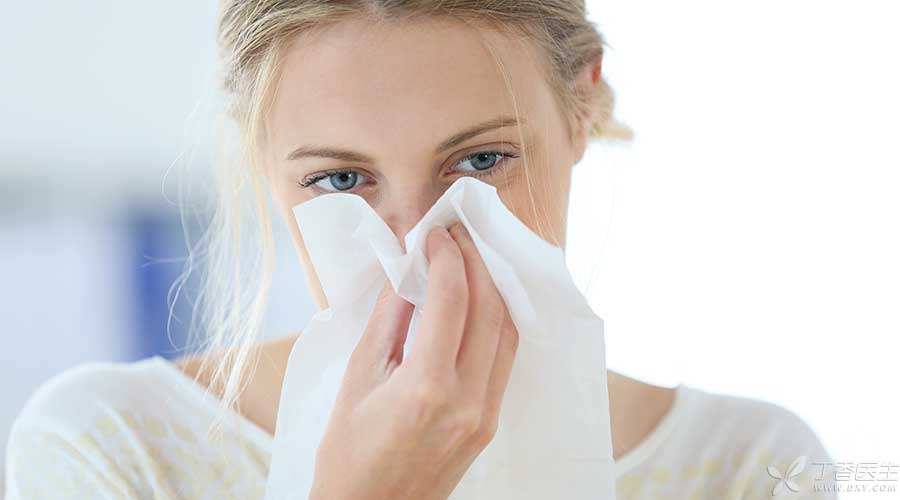
Some time ago, the temperature dropped sharply. Many friends caught a cold. All kinds of sneezing and sneezing were continuous.
In fact, it is not only people with colds or allergic rhinitis who have nasal mucus, everyone is constantly producing nasal mucus every day.
The truth about nasal mucus
Under normal circumstances, the nasal cavity of the human body secretes about 1,000 mL of liquid every day, of which about 700 mL evaporates and moistens the air in the nasal cavity, and another 300 mL collects on the surface of the mucosa to form a thin [mucus blanket] to protect the mucosa, prevent dryness, and adhere to foreign bodies such as bacteria and dust inhaled in the air.
A lot of nasal mucus, swallowed into the belly
Cilia grow on the nasal mucosa, these cilia will swing from front to back, and nasal mucus will naturally be sent to the throat. Because the nasal cavity and esophagus are connected, most of the nasal mucus that has not evaporated is swallowed unconsciously.
Did you not expect that many nasal mucus was swallowed by yourself? It was really a little disgusting to think about it.
The main components of nasal mucus are not only water, but also protein, carbohydrate, salt and some exfoliated cells. Among them, protein includes antibodies and lysozyme, which can kill bacteria and viruses. Of course, nasal mucus also contains stuck dust, pollen and microorganisms, but these things will be decomposed by gastric acid in the stomach and will not cause trouble to the body.
Blowing your nose is a normal reaction.
Once a cold or rhinitis occurs, why can you feel nasal mucus?
When you catch a cold or have an allergy, the mucosa of your nose is stimulated, edema occurs, and secretion increases. The normal channel for discharging nasal mucus is not enough, and you will feel blocked nose and much nasal mucus. You have to blow it out to be comfortable.
Blowing your nose is one of the normal physiological reaction mechanisms of the human body. Just like sneezing, it discharges harmful substances from your nasal mucus out of the human body.
The Harm of Blowing Your Nose
Most people blow their noses by holding their nostrils on both sides with two fingers and blowing their nostrils out with force. Little imagine, this method of blowing your nose is wrong and dangerous.
Because the nose and the organs around it are connected by means:
- The nasal cavity communicates with the paranasal sinuses. The nasal cavity communicates with the eyes through the nasolacrimal duct. The nasal cavity also communicates with the middle ear through the eustachian tube.
Therefore, if you blow your nose improperly, it may cause trouble to these [neighbors] around you, such as:
- Squeezing nasal mucus into paranasal sinuses causes sinusitis and headache; Squeezing nasal mucus into lacrimal duct causes conjunctival infection, nasolacrimal duct blockage, etc. Squeezing nasal mucus into eustachian tube causes otitis media, which cannot be cured for a long time and damages hearing.
Therefore, it is very necessary to blow your nose correctly.
How to blow your nose gracefully
Posture: Blowing your nose should adopt the posture of leaning forward with your upper body.
Due to the high opening position of maxillary sinus, adopting this posture is conducive to discharging secretions accumulated in maxillary sinus out of the body and avoiding sinusitis.
Action: First, press one nostril with your fingers and blow outward with a little force. The nasal mucus on the opposite nostril can blow out. After blowing one side, blow the other side.
Strength: The standard of strength is that the ear cannot hear the buzzing sound, and do not exert too much force.
Appropriate medication: If the nose is not ventilated and the nasal mucus is not easy to blow out, ephedrine nasal drops can be used and blew after nasal ventilation. However, ephedrine nasal drops should not be used for more than one week.
Pay attention to hygiene: blow your nose on the paper and throw it into the garbage can. Wash your hands after blowing your nose so as not to spread diseases and pollute the environment.
Don’t blow your nose too much
Excessive blowing of the nose makes the whole nose red, the ears buzzing and even painful, and may also damage the nasal mucosa and cause epistaxis.
Acute and chronic sinusitis will flow out of yellow and viscous pus nasal mucus. Go to the hospital for treatment in time. The doctor will prescribe some nasal drops and blow your nose after using them together.
Don’t pick your nose
Sometimes the nasal mucus is dry and forms dry scabs to stick to the nasal cavity, also known as [nasal excrement]. Many people feel uncomfortable and form the habit of picking the nose. In fact, this is harmful but not beneficial.
Dry scab of nasal mucus adheres closely to nasal hair, which is bound to damage nasal hair and fragile nasal mucosa when picking the nose. In the long run, nasal hair will be reduced, secretion function will be lost, nasal protection function will be gradually lost, and the incidence of pharyngitis, tracheitis, pneumonia, etc. will be increased.
Keeping moist can reduce the generation of nasal excrement, such as:
- Use humidifiers when the air is dry and the indoor heating is sufficient. When going out, you can wear a mask to keep nasal cavity humidity and prevent diseases such as colds.

What should I do when I feel that my nose is itchy?
It is recommended that normal saline flushing the nasal cavity can not only clean the nasal cavity, but also maintain the normal physiological environment of the nasal cavity and ensure its function.
The otolaryngology department of the hospital can buy normal saline and nasal irrigation device, which can be done at home after simple study.
Conditional can be carried out every day, for the treatment of allergic rhinitis, prevention of upper respiratory tract infection is very effective.
